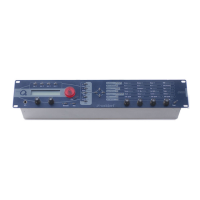Appendix – Tips & Tricks
Waldorf microQ User´s Manual 144
Appendix
Tips & Tricks
• Noise as FM Source for an oscillator gives a colored noise output whose character can be
changed with FM Amount, the oscillator waveform and the pitch of the oscillator.
• Use Envelope 3 or 4 to blend in one of the oscillators. E.g, if you need a small blip in the
attack phase, just use a free oscillator and a short percussive envelope to create this effect.
You can do that in the Modulation Matrix by setting the source to Env3 or Env4, the
destination to Osc1, Osc2 or Osc3 level and setting up a positive amount. If this blip
should be noisy, use FM with Noise as source for this oscillator to control the strength of
the noise.
• For a classic “Filter Trigger” sound, you don’t need to actually use a filter. You can also use
a sine oscillator that is pitch modulated by an envelope. This frees up the two filters and
you can use them to perform other tasks, e.g. filtering noise for a snare drum sound or the
like.
• Use the LFOs as FM Sources. With this technique, you get up to six oscillators frequency-
modulating each other to create extremely complex timbres. Just keep in mind that the
LFOs have a maximum speed of around 2500Hz and that they can produce aliasing side
effects.
• Use the wavetables as FM sources. If a LFO modulates the wavetable at the same time, you
will create really amazing sounds.
• For extremely wide sounds, you can do the following: Create a sound that uses only Filter
1 with the desired settings. Now set Routing to serial so that both filters are routed to the
panning stages with equal volume. Set Filter 2 to a comb filter type with middle or low
cutoff and no resonance. Now set the Pan parameters of the filters to opposite directions
and you should get a very fat sound. You can create further movement by applying an LFO
to the comb filter cutoff.
• The perfect place to read this user manual is your favorite bathroom. We recommend 5
pages per session!

